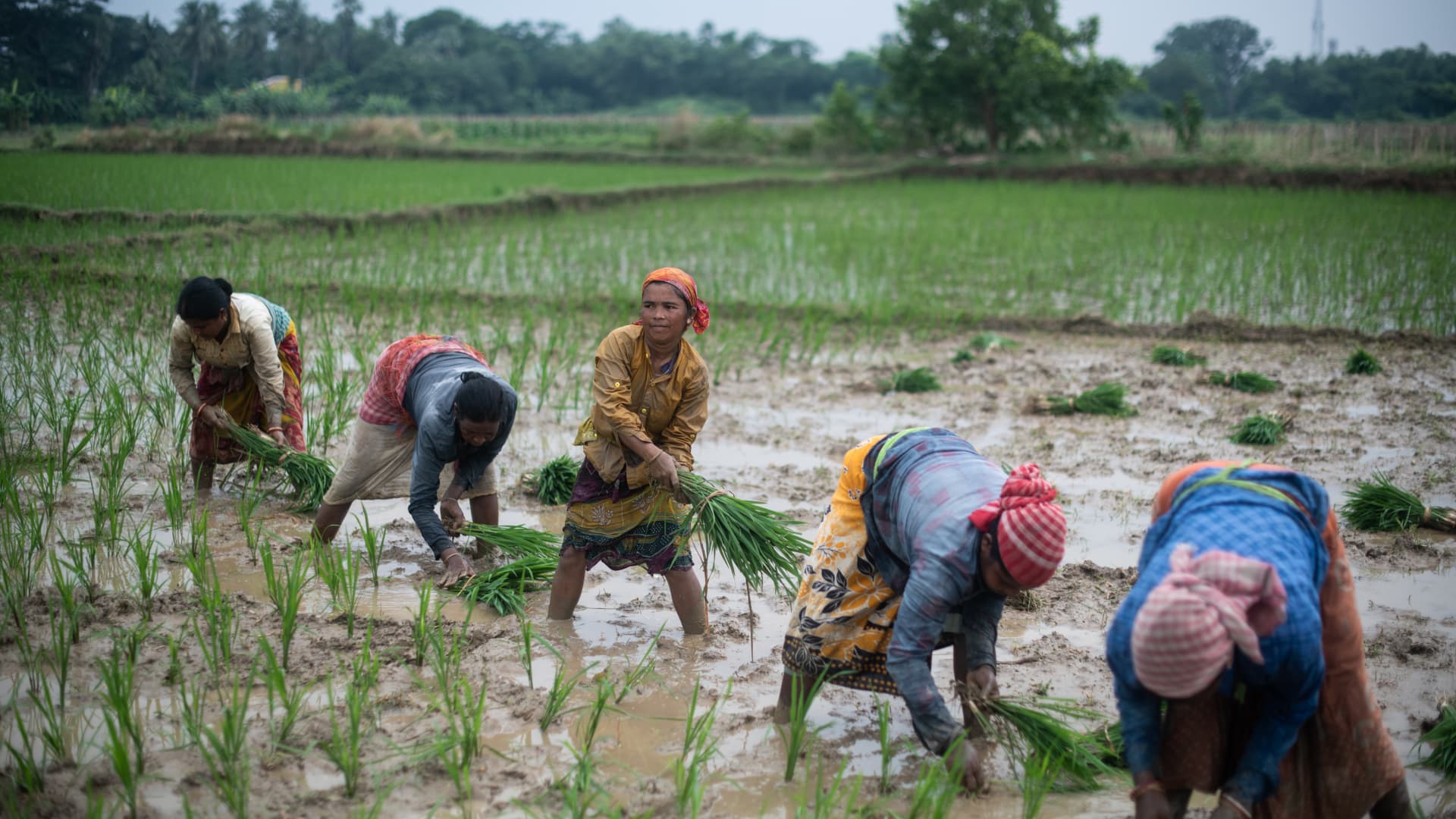Nomura said India’s rice production fell 5.6% as of September compared to the previous year, given below-average monsoon rainfall that affected the harvest.
Rebecca Conway | Getty Images News | Getty Images
India, the world’s largest rice exporter, has banned shipments of broken rice. Nomura said the move would ripple across Asia.
To keep domestic prices in check, the government banned the export of broken rice and imposed a 20% export tax on several types of rice from 9 September.
Nomura said the impact on Asia will be uneven, with the Philippines and Indonesia most likely to be affected by the ban.
India accounts for about 40% of the world’s rice shipments and exports to over 150 countries.
Exports reached 21.5 million tons That’s more than combined shipments from Thailand, Vietnam, Pakistan and the United States, the next four largest grain exporters, Reuters reported.
But production was down 5.6% year-on-year as of Sept. 2, Nomura said, given below-average monsoon rainfall that affected the harvest.
According to Sonal Varma, chief economist at a financial services firm, July and August are the “most important” months for rainfall for India, which determines how much rice is sown. has been uneven and production has declined, she added.
West Bengal, Bihar, Precipitation has decreased by 30% to 40% in Uttar Pradesh, Varma said. Although the amount of rainfall increased toward the end of August, [of rice] This means that the risk of yields falling is greater. ”
Earlier this year, a South Asian country restrained wheat Exporting sugar to curb rising local prices as the Russian-Ukrainian war threw global food markets into turmoil.
most affected
The Indian government recently announced that rice production could drop by 10-12 million tonnes during the southwest monsoon season from June to October.
According to a recently published Nomura report, “The impact of India’s rice export ban will be felt both directly by countries importing from India and indirectly by all rice importers due to its impact on world rice prices. You will feel it.”
Rice prices have remained high this year, with price increases in the retail market in July reaching about 9.3% year-on-year, compared to 6.6% in 2022, according to Nomura’s findings. did. Rice consumer price inflation (CPI) also surged. In 2022 he rose from 0.5% to 3.6% year-on-year as of July.
Nomura said the Philippines, which imports more than 20% of its rice consumption, is the country most at risk of rising prices in Asia.
As Asia’s largest net importer of commodities, rice and rice products account for a 25% share of the country’s food CPI basket, the highest share in the region. Statista.
The country’s inflation rate was 6.3% in August. Philippine Bureau of Statistics This is above the central bank’s target range of 2% to 4%. Given that, India’s export ban would be another blow to the Southeast Asian country.
Similarly, India’s rice export ban is also harmful to Indonesia. Indonesia could become her second most affected country in Asia.
Nomura reported that the country relies on imports for 2.1% of its rice consumption needs. According to Statista, rice accounts for about 15% of the food CPI basket.
However, pain may be minimal in other Asian countries.
According to Trade Map, Singapore imports all of its rice, with 28.07% of it coming from India in 2021. However, the country is not as vulnerable as the Philippines or Indonesia. [country’s] The CPI basket is very small,” said Varma.
Singaporean consumers tend to spend a “larger portion” of their spending on services, and this usually seems to be the case in high-income countries. The percentage tends to be even higher.”
“Vulnerabilities need to be looked at both in terms of their impact and dependence on consumer spending. [are] About imported food,” she added.
beneficiary country
Conversely, some countries may become beneficiaries.
Thailand and Vietnam are most likely to benefit from India’s ban, Nomura said. That’s because they are his second and third largest rice exporters in the world, making them the leading choice for countries looking to fill that gap.
In 2021, Vietnam’s total rice production was about 44 million tons, with an export value of $3,133 million. report Research firm Global Information announced in July.
According to Statista data, Thailand will produce 21.4 million tons of rice in 2021, an increase of 2.18 million tons from the previous year.
These two countries will benefit from increased exports and an increase in the overall value of rice exports as the Indian embargo puts upward pressure on rice prices.
“Anyone who is currently importing from India will also consider importing from Thailand and Vietnam,” Varma said.
https://www.cnbc.com/2022/09/19/philippines-indonesia-countries-most-vulnerable-to-indias-rice-export-ban-nomura.html Impact on Philippines, Indonesia and Thailand: Nomura
